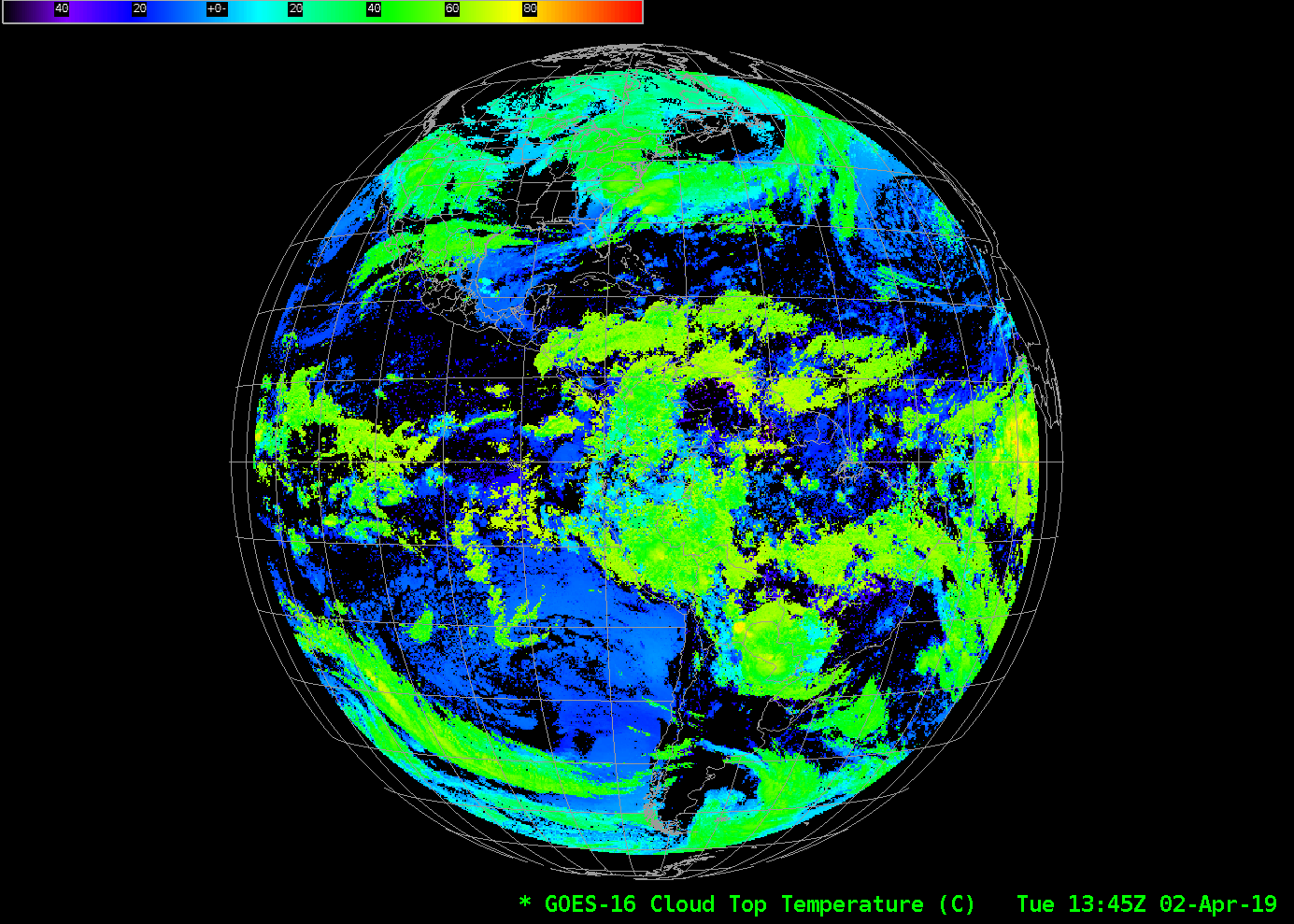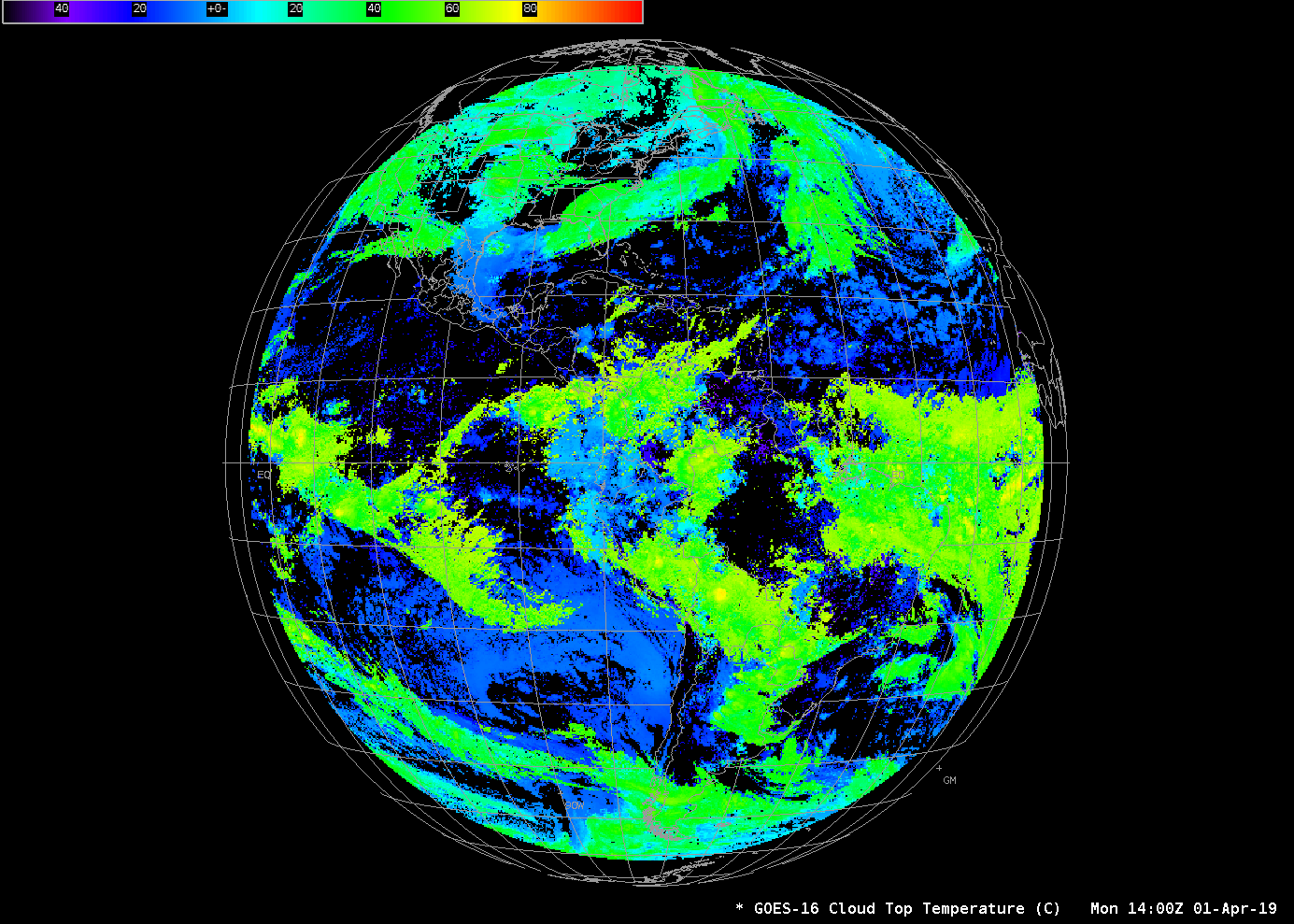Mode 6 is now the default scanning strategy of both GOES-16 and GOES-17

GOES-16 Cloud Top Temperature, 1345-1620 UTC on 2 April 2019 during Mode 3 Scanning (Click to enlarge). Mode 6 scanning with 10-minute full disk imagery started at 1600 UTC.
The most common scanning strategy for GOES-R satellites since GOES-16 became operational has been “Flex” Mode, Mode 3: During each 15 minutes, 1 full disk, 3 CONUS and 30 Mesoscale scans are achieved (Link showing Mode 3 Scanning. This YouTube Video shows Mode 3 Scanning with two adjacent mesoscale sectors). (Mode 4 — continuous 5-minute full disk imagery — has been implemented as well, as noted here).
In early 2014, before launch, researchers at NOAA’s Advanced Satellite Products Branch and CIMSS in Madison, Wisconsin suggested that some of the time where the ABI wasn’t scanning (The white space in this graphic) could be used to provide larger CONUS (or PACUS) scans. This didn’t happen, in part because it changed the dimensions of an ABI sector. However, in August 2014, an email exchange with the lead ABI instrument designer from Harris Corporation led to the concept of using the extra time instead to increase the cadence of full disk imaging from every 15 minutes to every 10 minutes in the “flex” mode. (Click to see a ‘Time-time’ chart of Mode 6 for GOES-16, and for GOES-17; You might notice that GOES-16 and GOES-17 have slightly different Mode 6 scanning strategies. Mode-6M for GOES-17 differs because of the timings of different calibration looks meant to mitigate errors associated with the faulty Loop Heat Pipe (link 1, link 2, link 3). Changes were need to in the ground system to support this new scan mode, and those changes are now operational.
The change to 10-minute full disk imagery matches the scanning of JMA’s AHI imager (and it will match the next generation EUMETSAT imager as well). It also gives the finer time resolution in the full disk domains for monitoring convection, fires, volcanic ash plumes, turbulence, etc., in regions outside CONUS and PACUS scans. In particular, Alaska region of the National Weather Service receives full-resolution Alaska sectors created from the full-disk imagery, and those sectors will now switch from a 15-minute cadence to a 10-minute cadence. All of Central and South America will now also have imagery every 10 minutes!
This page at the goes-r.gov website has more information on scanning strategies. You can also find more information about scanning schedules and scan sectors here.
Many Baseline Products will also adopt the 10-minute cadence. For example, compare the GOES-16 Baseline Cloud Top Temperature imagery above, from April 2, with Mode 6 scanning and 10-minute temporal resolution at the end of the animation, with the GOES-16 Baseline Cloud Top Temperature with Mode 3 and 15-minute temporal resolution below from April 1. (An animation with Mode 6 scanning at the end showing Band 13 “Clean Window” 10.3 µm imagery is here).

GOES-16 Cloud Top Temperature, 1400-1645 UTC on 1 April 2019 during Mode 3 Scanning (Click to enlarge)
Additional Full Disk animations covering a 6-hour period — 3 hours before/after the 1600 UTC Mode 6 activation time — are available from GOES-17 (Visible | Water Vapor) and GOES-16 (Visible | Water Vapor).

